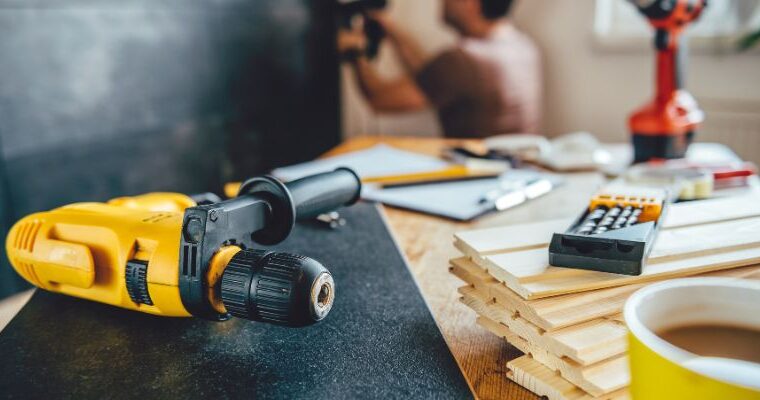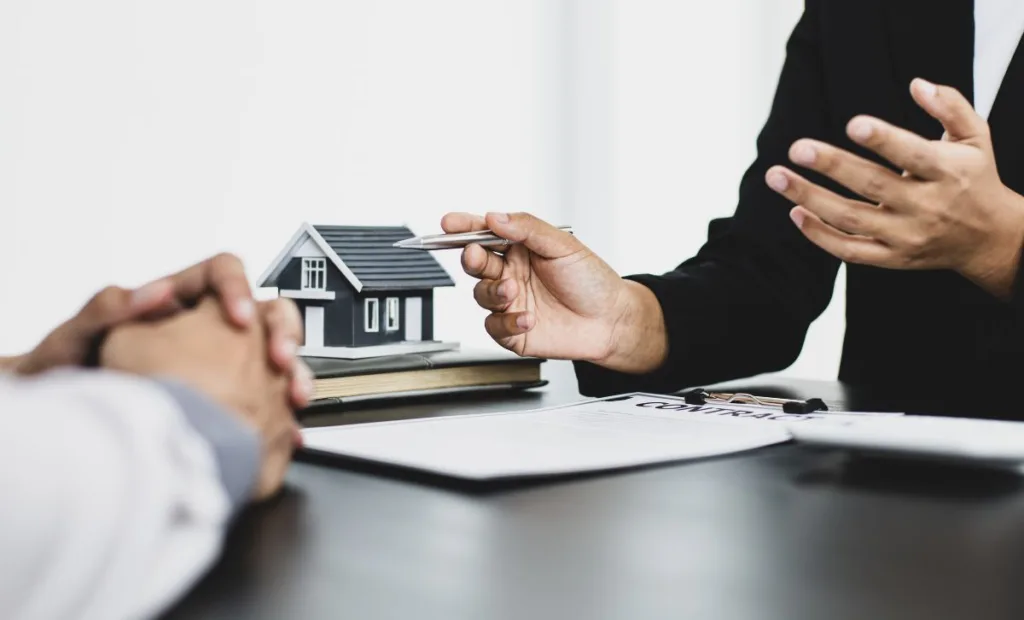Purchasing an investment property with the intent to renovate and sell can be a lucrative business. However, sometimes it’s difficult to determine if a property is worth your time and effort.
If you want to know when to purchase a fix and flip property, here are three helpful tips on how to evaluate fix and flip property.
What is Fix and Flip Property?
Fix and flip property is a real estate investment strategy in which investors purchase a property, make improvements to increase its value, then quickly resell it for a profit.
Unlike rental property investment, this type of investing usually involves rehabbing or renovating single-family homes or small multi-unit properties for resale. The goal is to buy a property at a below market rate, invest money into repairs and upgrades, and then sell the property at a higher price to generate a return. For more information, check out our ‘Ultimate House Flipping Guide for Beginners‘.
What are the Financial Benefits of Fix and Flips?

Fix and flips offer a number of financial benefits to those looking to make money in real estate. The most significant benefit is the potential for high returns on investment (ROI). Fix and flips typically involve buying a distressed property, making necessary repairs, and then selling it for a profit. Depending on the market conditions, real estate investors can often realize returns on their investments that are significantly higher than other more traditional real estate investments.
5 Common Mistakes Fix & Flip Investors Make
Unfortunately, many fix & flip investors make some common mistakes that can cost them time and money. Here are five common mistakes to watch out for when evaluating potential properties:
1. Not Estimating Repair Costs:
One of the most common mistakes that fix and flip investors make is not accurately estimating repair costs before purchasing a property. Knowing what repairs need to be done and how much they will cost can help you determine if a property is a good investment or not.
2. Not Understanding the Market:
Fix and flip investors should have an in-depth understanding of their local market so they can properly price their properties for sale. It’s important to know what prices buyers are willing to pay for different types of properties in your area, as well as what type of renovations will offer the biggest return on investment.
3. Not Planning Ahead for Financing:
Many fix and flip investors fail to plan ahead when it comes to financing their investments, which can lead to costly delays that eat into profits. Be sure to research financing options before you purchase a property and understand how much money you’ll need to put down at closing, estimated loan payments, and any other associated costs like points or origination fees.
4. Underestimating Time Commitment:
Fixing up properties takes time and requires attention to detail; successful fix and flip investors must be prepared to commit themselves fully during the rehabbing process or risk running over budget or missing deadlines due to lack of oversight.
5. Failing To Protect Yourself Legally:
It’s important for fix and flip investors to take legal precautions before investing in real estate by consulting with an attorney about title searches, liens, zoning laws, environmental regulations, etc., which could all affect profitability in the long run.
How to Evaluate Fix and Flip Property?

There are a range of strategies you should use when evaluating fix and flip property to ensure you get the most out of your investment. Here are some of Express Capital Financing’s top tips on how to evaluate a fix and flip property:
1. Research the local market:
Before investing in a fix and flip property, it is important to conduct thorough research of the local market.
Researching the market conditions includes gathering data on comparable homes in the area, researching zoning laws, reviewing crime rates, and understanding the local real estate trends.
To find comparable homes in the area, check out listings from real estate agents or search online for recent sales in the neighborhood. You can also look at rental rates in the area to get an idea of what kind of return you can get from renting out the property.
2. Purchase Price
Closely related to the last point, when evaluating a potential fix and flip property, another vital factor to consider is the purchase price. The goal of fixing and flipping a property is to turn a profit, so it’s essential to purchase a property for the lowest possible cost while still ensuring you can cover your costs.
In most cases, it’s best to look for properties that are priced below market value, so you have more room to make a profit when you resell.
3. Potential Buyers
Even at this initial stage, it’s very important to consider your potential buyers. It’s essential to know who you’re targeting when considering a fix and flip, as it will influence the kind of property you choose and how much money you plan to spend on renovations.
To find potential buyers for your fix and flip, start by researching the local real estate market to get an understanding of who is buying in the area. Additionally, use online resources such as social media and listing sites to understand what buyers are looking for.
4. Real Estate Agents
Real estate agents can be an invaluable resource when it comes to evaluating fix and flip properties.
Agents have access to the most up-to-date market information and can provide valuable insight into a property’s potential value and what you can expect as a realistic sale price. They can help you determine the best way to approach renovations, as well as provide advice on location, demographics, and other important factors.
Agents are also great for networking with contractors, helping you find the most reliable and cost-effective services for your project.
5. Inspect the Property:
Once you have an idea of what kind of return you can expect from a fix and flip property, it is important to conduct a thorough inspection of the property before investing.
Look for any potential hidden costs. These could be structural issues that could be costly to repair or potential safety hazards that could affect the property’s value. If you are unable to inspect the property yourself, it is recommended that you hire a professional inspector to do the job for you.
Check out our property walk-through checklist to get you started on what to look out for when considering a property to purchase.
6. Calculate Your Financing:
After researching the market and inspecting the property, it is important to calculate your financing options.
This includes determining how much money you need to purchase and your rehab budget as well as how much you can expect to make once the project is complete. If you are working with a partner, it is important to divide the financing costs and potential profits evenly.
And if you need a fix and flip loan, we at Express Capital Financing can get you the funds you need, quickly and professionally.
7. Private Lenders
Private money lenders like us at Express Capital Financing, are an important part of the real estate fix and flip process. Private lenders provide short-term financing to investors who are looking to buy a property to renovate and sell for a profit.
When evaluating whether or not to use a private lender in the fix and flip process, it’s important to consider the interest rate they offer, the duration of the loan, and any other fees they may charge. Private lenders can be a great option for investors who don’t have access to traditional financing or don’t want to take the risk of taking out a bank loan.
8. Use the 70% Rule of Thumb Method
Evaluating the value of a property can be complicated.
However, there is a 70% rule of thumb method recommended when dealing with fix and flip properties. The rule involves the after-repair value of a property minus the repair costs.
A simple example is if a property is worth $200,000 after $25,000 in repairs, you shouldn’t pay more than $115,000 to acquire the property. While this is only a suggested rule, it’s a good method to use if you’re looking to quickly acquire properties.
This method may lack thoroughness compared with the other methods; however, speed and accuracy are achieved.
Rehabs & Repairs Costs

When it comes to evaluating a potential fix and flip property, one of the most important things to consider is the cost of any necessary rehabs or repairs. There are a wide range of repair and rehab costs to consider when calculating your rehab budget, so let’s dive into them now.
Cost of Repairs/Rehabs Costs
When evaluating a fix and flip property, one of the most important factors to consider is the overall cost of repairs and rehabs. This is because these costs can significantly affect the potential return on investment (ROI) from a real estate project.
The first step in assessing repair costs is to inspect the property thoroughly. This involves taking a close look at any hidden costs in the form of all areas of the home, including structural elements, electrical wiring, plumbing, and HVAC.
It is also important to consider the cost of cosmetic updates and any special projects that may be needed. This could include replacing flooring, painting walls, or remodeling kitchens or bathrooms.
Material Costs
One of the largest costs for house flippers is going to be material costs. Calculating an accurate estimate of material costs can be critical for determining whether or not a project will be profitable.
First, identify all of the materials that need to be purchased for the project in order to complete it. This could include things like paint, lumber, tile , or fixtures. Next, research the prices of these materials and calculate how much it will cost to purchase them.
Finally, take into consideration any additional costs that could be associated with purchasing the materials like delivery fees or property taxes. These costs can add up quickly and should not be overlooked when calculating material costs for a fix-and-flip project.
Square Footage
The square footage of a potential fix and flip property gives investors an idea of how much they can expect to spend on renovations, as well as how much they can make when it comes time to sell.
The first step in figuring out the square footage is to measure all of the walls separately. Measure each wall from floor to ceiling, and then multiply the length by the height of each wall. Add up all of these numbers to get the total square footage.
It is also important to consider any additional square footage from outdoor or unfinished areas like porches, basements, or attics. These areas can add significant value when it comes time to sell, so it is important to take them into consideration when evaluating a potential fix and flip property.
The home report should give you an accurate square footage, which can help determine your financing costs.
Additional Costs
When evaluating a potential fix and flip investment property, it is important to consider all of the costs associated with the project for an accurate rehab budget.
In addition to the purchase price of the home, there are many additional costs that can quickly add up. These include materials and labor for renovations as mentioned above, but also closing costs for both buying and selling, taxes, financing costs insurance, legal fees, utilities during the renovation period, staging costs if desired before listing , and more.
Take the time to research these costs ahead of time to ensure that they are factored into your overall budget for the project. Otherwise, you could find yourself in a situation where you overestimated your potential profit margin and end up losing money on the deal.
How to Keep Costs Down
Consider Hiring a Professional
The last thing you want to happen is to lose money on a property.
Sometimes it’s hard to know if a property will be worthwhile. One of the best ways to know that you won’t overbid on a property and get an accurate cost estimate is to hire a professional.
While this is on the surface the most expensive option, you are more likely to ensure that a property is purchased at the right price and that the repairs will be done quickly and efficiently.
Cost, speed, thoroughness and accuracy are important when fixing and flipping a property. While hiring a professional is costly, it guarantees the other factors are achieved.
Do-It-Yourself

If you’re looking to cut costs while fixing and flipping properties, doing the job yourself is a good option.
Fixing and flipping a property involves a variety of costs including the purchase price, renovation costs, carrying costs and marketing costs.
The purchase price is obviously what you pay for the property and rehab costs include all materials and labor necessary to repair and refresh the property. Carrying costs are the expenses required from the time you acquire the property until you sell it. And finally, marketing costs include any real estate agent and marketing fees to sell the property.
If you opt to handle all these costs on your own, be prepared to spend the required time and money.
So, ready for your first fix and flip investment?
Fix and flip property can be a lucrative investment opportunity if done right. To ensure success, it is important to research the local market, inspect the property carefully, and calculate your financing options before investing.
When evaluating the worth of a fix and flip property, use these tips to ensure the right amount of cost, speed, exactness, and diligence.
And if you’re looking for a financing partner, get in touch with our team today. We’ll help you quickly secure the best financing for your fix and flip investment.
FAQs
What should I look for in a fix and flip property?
When evaluating a fix and flip property, there are several key factors to consider.
1. Location: with any real estate investment, location is of utmost importance. Research the neighborhood or area well to determine if its home values have been rising over time, if it is close to amenities, attractions, transportation or employment centers and if it is likely to attract prospective buyers looking for a home .
2. Condition: inspect the property carefully to determine what repairs and renovations need to be made and whether they are within your budget. If the home needs extensive renovation, it might not be a worthwhile investment.
3. Financing: determine how you will finance your fix and flip project before investing in a property. Consider all options available, such as hard money loan or traditional bank loan and make sure that you understand the terms of the loan including interest rates, repayment schedules and any potential penalties.
What is the 70 per cent rule?
The 70 per cent rule is a guideline that real estate investors use to help decide whether or not to pursue a fix and flip property. It involves calculating the maximum amount you should pay for a property by taking 70 per cent of its after repair value (ARV).
For example, say a home has an ARV of $200,000. Using the 70 per cent rule, you should pay no more than $140,000 for the property. This rule is a helpful tool to ensure that you don’t overpay for a property and that it will still be profitable after renovation.
What is a good profit margin for a fix and flip?
Profit margins will vary depending on the local market conditions, the condition of the house, and other factors. Generally speaking, a good profit margin for a fix and flip can range anywhere from 10-30%, with higher percentages being more desirable.






